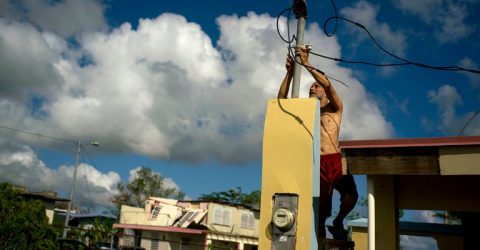By RICHARD BRANSON and AMORY B. LOVINS
More than a month after Hurricane Maria devastated Puerto Rico, nearly 80 percent of the island remains without power, and food and water can be tough to find. As we rally to help the survivors and look to rebuild, we owe it to the victims there and in hurricane-ravaged Texas, Florida and elsewhere in the Caribbean to build more resilient infrastructure and prevent and reduce such destruction.
Rebuilding the electric grid in Puerto Rico will take months. But blackouts requiring weeks or months to fix are not caused by hurricanes alone. Many of the affected areas are powered by obsolete grids using fossil fuels. These fragile systems are easily knocked out by storms. We can’t eliminate hurricanes. But if we modernize the electric grid, we can stop blackouts caused by monster storms while also saving fossil fuel and reducing emissions of the greenhouse gases that warm the planet and make these storms more likely and destructive.
When one of us (Richard Branson) emerged from his cellar after riding out Hurricane Irma’s assault on Necker Island, the house and everything surrounding it was destroyed — except for the solar power array, which laid flat on ground and remained materially intact. Solar power systems survived Irma and kept working in Florida and Haiti. While Hurricane Harvey cut some Texas power lines, no wind farms were destroyed.
